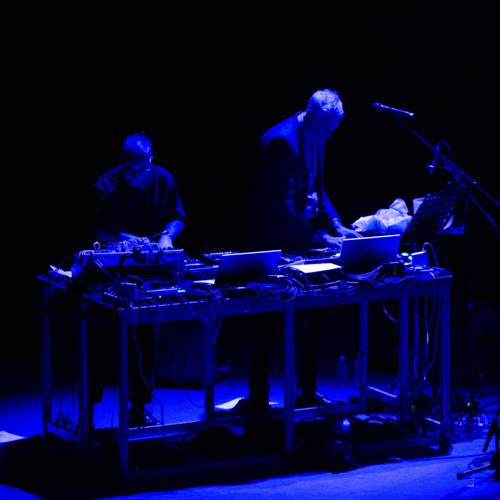
FAQ About The Cultural Significance of Soundwalks and Acoustic Ecology

What is a soundwalk?
A soundwalk is an activity where participants walk through an environment with a focus on listening to the sounds around them. The purpose of a soundwalk is to engage with the auditory landscape and heighten awareness of the soundscape, often revealing new insights about a place and its acoustic environment. Soundwalks can be informal or structured and may include guided tours highlighting specific sounds or areas of interest.

How does acoustic ecology contribute to environmental awareness?
Acoustic ecology is the study of the relationship between humans and their environment through sound. By focusing on the sounds that characterize particular environments, acoustic ecology helps raise awareness of how sound impacts ecological systems and human well-being. This awareness can lead to greater recognition of environmental issues such as noise pollution, helping to drive changes in behavior and policy to protect both human health and wildlife habitats.

What role does sound perception play in cultural identity?
Sound perception plays a significant role in cultural identity as it influences how communities experience their environment and connect with their culture. Sounds such as local music, language, and urban noise contribute to a community's unique soundscape and can evoke a sense of place and belonging. In this way, sound perception is integral to cultural heritage and can strengthen social bonds within communities.

What artistic expressions are involved with soundwalks?
Soundwalks are often used as inspiration for various forms of artistic expression, including sound art, music composition, and performance art. Artists may create works based on the acoustic experiences during a soundwalk, capturing the unique sounds and transforming them into creative expressions that convey the mood or feel of a place. These artistic endeavors often encourage audiences to engage more deeply with the auditory aspects of their surroundings.

What is the purpose of conducting soundwalks?
The purpose of conducting soundwalks is to deepen awareness and appreciation of the auditory environment by engaging participants in active listening. Soundwalks help people recognize the diversity of sounds around them, promote mindfulness, and enhance connections to place and community. They can also serve educational and research purposes by documenting and interpreting soundscapes for further study.

How can soundwalks influence personal well-being?
Soundwalks can be beneficial for personal well-being by encouraging mindfulness and relaxation. Engaging in focused listening during a soundwalk can reduce stress, enhance mood, and promote a sense of calm by immersing participants in natural or urban soundscapes. This practice allows individuals to step away from the constant noise and distractions of everyday life, providing an opportunity to reconnect with their environment and themselves.

What are some common misconceptions about acoustic ecology?
One common misconception about acoustic ecology is that it only deals with the study of noise pollution. While noise pollution is a significant concern, acoustic ecology encompasses a broader understanding of the auditory environment, including the positive aspects of sound and how they influence human and ecological dynamics. Another misconception is that it is only relevant to rural or natural environments, whereas acoustic ecology is equally concerned with urban soundscapes.

How do soundwalks differ from regular walks?
While regular walks often focus on physical activity or visual observations, soundwalks specifically prioritize the auditory experience of a location. Participants in a soundwalk are encouraged to listen attentively to the sounds around them, often minimizing other senses to explore how sound can shape their understanding of the environment. This focus on listening transforms the experience and enhances the quality of awareness and presence during the activity.

What is the relationship between soundwalks and acoustic ecology?
Soundwalks and acoustic ecology are closely related, as both emphasize the importance of sound in understanding and interacting with our environment. Soundwalks serve as practical applications of acoustic ecology principles by allowing participants to experience and interpret soundscapes firsthand. These experiences can lead to increased public awareness and interest in the study and preservation of acoustic environments.

Can soundwalks be used for educational purposes?
Yes, soundwalks can be an effective educational tool for teaching about the environment, cultural studies, and the role of sound in our lives. They can be incorporated into curricula to help students develop critical listening skills, understand the significance of soundscapes, and appreciate the diversity of sounds in different environments. This hands-on approach encourages experiential learning and can foster a deeper connection with the subjects being studied.

What is acoustic ecology?
Acoustic ecology is the interdisciplinary field that studies the relationship between humans and their environment through sound. It explores how natural and human-made sounds affect ecosystems, human health, culture, and well-being. By analyzing soundscapes, acoustic ecologists seek to understand the impacts of sound on our environments and promote the preservation of acoustic diversity within urban and natural settings.

In what ways do soundwalks enhance environmental awareness?
Soundwalks enhance environmental awareness by encouraging participants to actively listen to and understand the intricacies of their acoustic environment. This heightened sensory engagement allows individuals to notice the impact of human activities on the soundscape, such as noise pollution, and appreciate the natural sounds that play a vital role in maintaining ecological balance. This awareness can inspire actions to protect and conserve sound environments.

What equipment is needed for a soundwalk?
Typically, the minimal equipment needed for a soundwalk is simply a keen set of ears! However, participants can enhance their experience by using audio recording devices to capture sounds, headphones for guided audio tours, or note-taking materials to jot down observations. Some soundwalks may provide additional materials like maps or audio guides, depending on the structure and purpose of the activity.

Are there famous examples of soundwalks or practitioners?
Yes, there are several well-known practitioners and projects in the realm of soundwalks. One notable example is Hildegard Westerkamp, a composer and sound ecologist who has created numerous soundwalks designed to explore and appreciate urban environments through listening. Her works often serve as a model for others interested in the artistic and ecological aspects of soundwalks.

How do cultural sounds define a community's identity?
Cultural sounds—such as local music, language, calls to prayer, or traditional ceremonies—play a key role in defining a community's identity by reflecting its unique history, values, and social dynamics. These sounds create a shared acoustic space that reinforces cultural heritage and community bonds, contributing to a collective sense of identity and belonging.

What is the significance of soundscapes in acoustic ecology?
In acoustic ecology, soundscapes are significant as they encompass all the sounds within a given environment, both natural and human-made. Studying soundscapes provides valuable insights into the health of ecosystems, the impact of human activities, and changes in environmental conditions. By analyzing soundscapes, researchers can identify patterns and disturbances that may require attention to restore or protect acoustic environments.

How can soundwalks be adapted for urban areas?
Soundwalks can be easily adapted for urban areas by designing routes that highlight diverse soundscapes, such as bustling markets, quiet parks, or historical districts. Urban soundwalks can focus on the contrasts between natural and man-made sounds, the cultural aspects of sounds associated with specific neighborhoods, and the impact of urban planning on acoustic environments. These walks can also address issues like noise pollution and its effects on city living.

Is there a connection between soundwalks and mindfulness practices?
Yes, there is a strong connection between soundwalks and mindfulness practices, as both encourage participants to focus on the present moment with heightened awareness. Soundwalks incorporate mindfulness by directing attention to the auditory surroundings and promoting an immersive sensory experience. This practice of attentive listening helps reduce stress, improves concentration, and fosters a deeper appreciation of the environment.

How can acoustic ecology inform public policy?
Acoustic ecology can inform public policy by providing evidence-based recommendations for managing sound environments to benefit human health and ecological systems. For example, research findings can be used to establish regulations on noise pollution, design urban spaces that reduce harmful noise levels, or protect critical natural soundscapes. Informed policies help ensure that acoustic environments are sustainable and conducive to well-being.

What are the benefits of integrating soundwalks into community events?
Integrating soundwalks into community events can offer several benefits, including promoting community engagement, fostering environmental awareness, and encouraging cultural exploration. Soundwalks can serve as a platform for residents to connect with their local surroundings, celebrate their cultural heritage, and reflect on the soundscape's role within their community. Additionally, such activities can draw attention to hearing the natural and social dynamics at play, fostering dialogue and understanding among participants.
